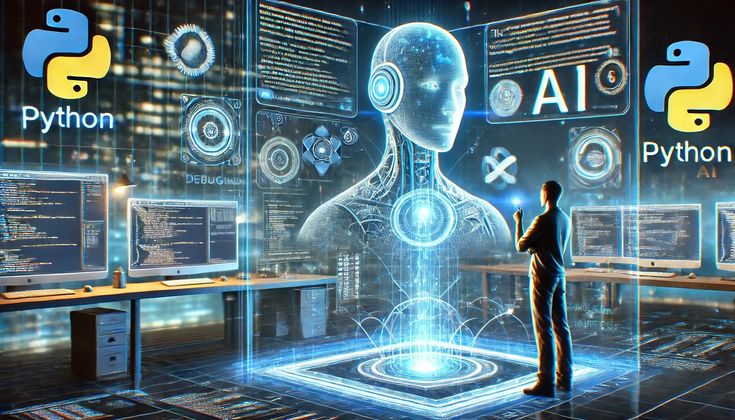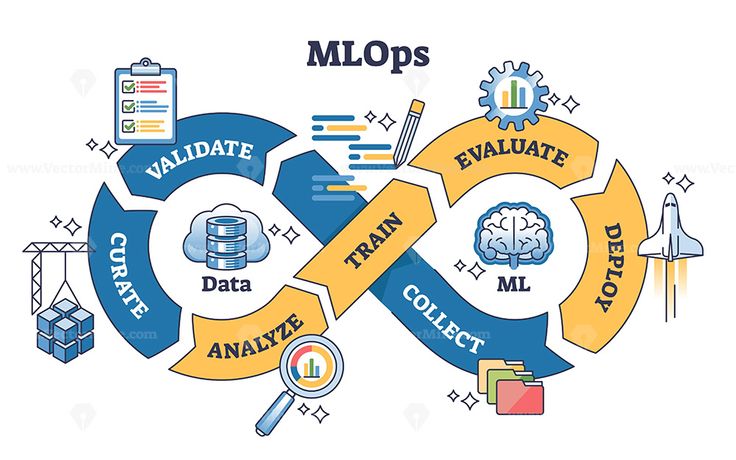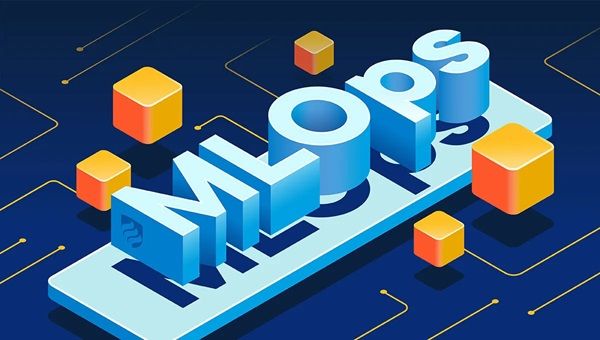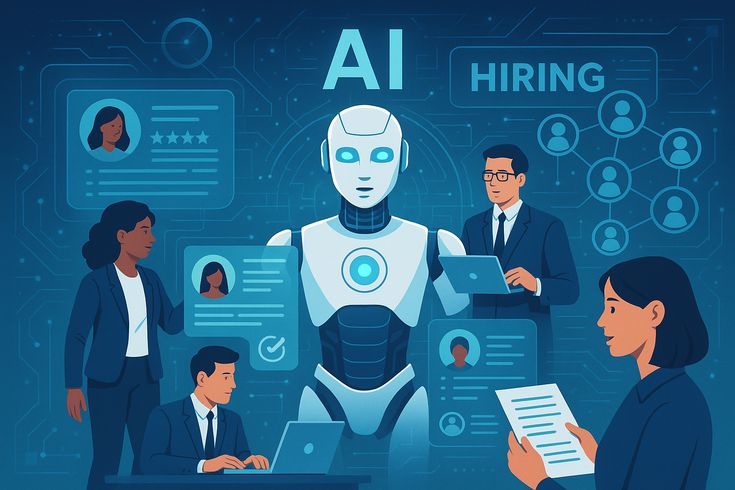1. Mastering Mathematical Foundations

A strong mathematical base is the heart of machine learning. Begin with linear algebra, focusing on vectors, matrices, eigenvalues, and singular value decomposition (SVD). These concepts power neural networks, dimensionality reduction, and data transformations. Multivariate calculus—especially gradients, derivatives, and the chain rule—explains how optimization algorithms like gradient descent update model parameters. Probability theory introduces uncertainty modeling, using probability distributions and Bayes’ theorem to handle unpredictable data. Statistics supports hypothesis testing, confidence intervals, and experimental validation. Together, these disciplines form the language of algorithms, enabling precise understanding and innovation. Texts such as Linear Algebra by Gilbert Strang and Pattern Recognition and Machine Learning by Christopher Bishop provide excellent theoretical and practical grounding. Regularly implement matrix operations, gradient derivations, and probability models in Python to translate theory into intuition. This foundation ensures clarity in model design, debugging, and interpretation throughout your AI journey.
2. Building Intuitive Understanding Through Practice
Theoretical learning must be reinforced through application. Deep understanding develops when learners manually compute gradients, visualize eigenvectors, and simulate probability distributions. Implementing these mathematical operations using NumPy builds computational intuition, making abstract ideas tangible. Start by coding matrix multiplication, gradient descent steps, and expectation calculations from scratch. Observe how small numerical changes affect model behavior—this bridges theory and real-world application. Incorporating mathematics into small Python projects helps internalize concepts and improves confidence in research and debugging.
Thank you for reading this post, don't forget to subscribe!When these fundamentals are coded repeatedly, learners recognize computational patterns behind neural networks, optimization, and statistical models. This experiential learning fosters precision in reasoning and accelerates problem-solving. The combination of math, logic, and code practice ensures not just memorization but mastery, creating professionals who can diagnose, innovate, and improve algorithms systematically.
3. Developing Programming Proficiency in Python

Programming fluency converts theoretical understanding into practical skill. Python remains the universal language for AI development due to its readability and extensive library ecosystem. Begin with control structures, data types, and object-oriented programming (OOP). Then, learn to write modular, reusable, and testable code following best practices like PEP-8. Master libraries such as NumPy for numerical operations and pandas for efficient data handling. Practice creating scripts that preprocess data, automate workflows, and execute algorithms. Git version control is essential for collaboration—learn branching, merging, and pull requests.
Write code that others can easily interpret, documenting every function with clear comments and docstrings. Unit testing using pytest ensures reliability. Clean coding habits differentiate professionals from hobbyists, as they guarantee scalability, maintainability, and consistency across projects. Ultimately, strong Python skills are the foundation upon which every successful machine learning system is built.
4. Data Preparation and Exploratory Data Analysis (EDA)
Effective models depend on high-quality data. Begin by learning to handle missing values, outliers, and inconsistent data types. Explore datasets visually and statistically to uncover trends, correlations, and anomalies. Use pandas for manipulation, matplotlib and seaborn for visualization, and numpy for transformations. Apply feature engineering—creating, scaling, or encoding variables that enhance model performance. For large-scale data, use Dask or Apache Spark to process in parallel. Always document every cleaning step for transparency and reproducibility. Maintain well-organized directories and README files explaining the pipeline.
EDA isn’t just about understanding data—it’s about questioning assumptions and preparing reliable inputs for algorithms. This stage also prevents common pitfalls like data leakage, ensuring model validity. A disciplined EDA process strengthens insight, reduces errors, and provides the foundation for all further modeling efforts.
5. Avoiding Data Leakage and Implementing Proper Partitioning
Data leakage occurs when information unavailable at prediction time influences the model during training, leading to inflated performance metrics. Prevent this by rigorously separating training, validation, and test data. For time-series or sequential datasets, random splits are inappropriate—use time-based partitioning to maintain chronological order. This approach ensures realistic performance evaluation. Familiarize yourself with techniques for segmented processing to handle massive datasets efficiently. Libraries like Dask and Spark divide large datasets into smaller partitions and parallelize computations.
Proper data partitioning not only preserves integrity but also prevents misleading conclusions. It ensures that models generalize well to unseen data, which is critical in production environments. Understanding when and how to partition data reflects a mature grasp of data science ethics and professionalism—qualities every employer values in a candidate.
6. Implementing Reproducible Data Pipelines

Reproducibility is the backbone of trustworthy data science. Transform your exploratory scripts into automated, maintainable pipelines. Learn tools like Apache Airflow and dbt to orchestrate ETL processes and track dependencies. Every step—cleaning, feature creation, model training—should be replicable with consistent outputs. Document your workflow thoroughly using structured READMEs, comments, and configuration files. Store data in efficient formats like Parquet and manage schema changes with version control.
Practice continuous integration for data tasks to ensure stability as datasets evolve. This approach guarantees consistency across experiments and teams, which is crucial for collaboration and compliance. In technical interviews and real-world projects alike, reproducibility signals professional integrity and mastery. A reproducible pipeline is not just a technical asset—it’s proof of disciplined, ethical data science.
7. Mastering Classical Machine Learning Algorithms
Before diving into deep learning, solidify your command of traditional algorithms. Understand the mechanics of linear and logistic regression, k-nearest neighbors, decision trees, random forests, and support vector machines. Progress to advanced ensemble methods such as gradient boosting (XGBoost, LightGBM, CatBoost). Study each algorithm’s assumptions, hyperparameters, and limitations. Learn to identify bias-variance tradeoffs, tune parameters effectively, and use cross-validation for fair evaluation. Mastering these models helps you select the right approach for each problem and provides context for interpreting results. Tools like scikit-learn streamline implementation while allowing deep experimentation. Build intuition by comparing algorithm performance on varied datasets. Classical ML forms the conceptual bridge between data analysis and AI, ensuring a complete and balanced understanding of the field.
8. Learning Modern Deep Learning Frameworks (PyTorch & TensorFlow)
Frameworks like PyTorch and TensorFlow empower scalable and flexible model building. PyTorch’s dynamic computation graph offers intuitive experimentation, making it ideal for research. Learn to define neural networks with torch.nn, use Autograd for automatic differentiation, and manage data through Dataset and DataLoader classes. For broader enterprise adoption, explore TensorFlow and Keras, which support production-ready APIs and model serving. Learn to fine-tune pre-trained models using Hugging Face Transformers for NLP and TorchVision for computer vision. Practice saving models (torch.save), exporting to ONNX, and containerizing with Docker for deployment consistency. Use experiment tracking tools like MLflow and Weights & Biases to manage metrics, hyperparameters, and versioning. Framework mastery transforms ideas into deployable solutions, bridging innovation with industry-standard execution.
9. Advancing in Computer Vision Specialization
Computer vision enables machines to interpret images and video. Begin with the principles of convolutional neural networks (CNNs)—convolutions, pooling, and activation functions. Study landmark architectures like ResNet, EfficientNet, and Vision Transformers (ViT). Learn tasks such as image classification, object detection (YOLO, Faster R-CNN), and segmentation (U-Net, DeepLab). Enhance performance through transfer learning, data augmentation, and fine-tuning. Evaluate models using mAP and IoU metrics to measure precision and overlap accuracy. Implement these solutions with datasets like ImageNet and COCO for real-world understanding. In production, optimize for latency using quantization and pruning techniques. Vision projects demand attention to both computation and creativity, blending mathematical precision with visual intuition—a perfect showcase of deep learning power.
10. Building Competence in Natural Language Processing (NLP)
Language is the richest form of data. Modern NLP revolves around transformer architectures such as BERT, GPT, and RoBERTa. Start with tokenization, embeddings, and the attention mechanism that powers these models. Learn fine-tuning for tasks like classification, summarization, and question answering using Hugging Face Transformers. Evaluate outputs using metrics like F1, BLEU, or ROUGE, depending on the task type. Implement retrieval-augmented generation (RAG) for advanced information systems. Pay attention to ethical considerations—bias, fairness, and data privacy—when deploying language models. Mastering NLP not only strengthens your AI skillset but also opens opportunities in chatbots, virtual assistants, search engines, and enterprise automation. Understanding how models “understand” language bridges the gap between human cognition and artificial intelligence.
11. Data Engineering and Big Data Tools
Machine learning thrives on strong data infrastructure. Learn SQL and data modeling to design efficient schemas. Explore Apache Airflow for orchestration, Kafka for streaming data, and dbt for data transformation. Study storage formats like Parquet and Avro for efficient read/write operations, and platforms such as Amazon S3 or Google Cloud Storage for scalable data lakes. Understand batch vs streaming pipelines and when to use each. Pay attention to data contracts, lineage tracking, and privacy compliance, ensuring both reliability and security. Familiarity with these tools allows you to manage pipelines that feed machine learning systems with consistent, validated data. In today’s data-driven economy, mastering engineering principles makes you indispensable to any AI-driven organization.
12. MLOps: Deployment, Monitoring, and Automation

MLOps bridges development and operations, ensuring models remain reliable post-deployment. Learn containerization with Docker and orchestration with Kubernetes to manage scalable services. Implement APIs with FastAPI or use model servers like TorchServe for inference. Automate deployment pipelines through CI/CD to maintain version control and prevent downtime. Monitor models using Prometheus and Grafana, tracking latency, accuracy, and data drift. Handle model versioning with DVC or MLflow. Learn strategies like canary deployment and rollback to manage updates safely. By combining automation and observability, you ensure continuous improvement and high availability. Skilled MLOps engineers shorten the path from prototype to production, a highly valued ability in modern AI teams.
13. Model Evaluation, Fairness, and Monitoring
Evaluation is more than accuracy—it’s about trustworthiness. Formulate hypotheses before testing models to align with business goals. Use cross-validation, A/B testing, and statistical power analysis to ensure reliable comparisons. Evaluate slice metrics (performance across user segments) to uncover bias. Apply robustness testing against noise and adversarial data to verify stability. Integrate fairness metrics such as demographic parity and equalized odds for ethical compliance. In production, monitor models continuously for data drift, performance degradation, and SLA violations using dashboards and automated alerts. Log anonymized inputs and outputs for traceability. Set up retraining triggers when metrics drop below thresholds. Continuous evaluation safeguards integrity, fairness, and reliability in AI systems—turning models into trustworthy business assets.
14. Staying Updated with Research and Paper Reading
The AI field evolves daily—staying current is essential. Develop a strategy for reading research papers efficiently: start with abstracts, figures, and conclusions to gauge relevance, then dive deeper into methods when valuable. Follow key sources like arXiv, NeurIPS, and ICML. Engage with Papers With Code to replicate experiments. Reproducing published results sharpens both coding and critical thinking skills. Summarize insights in blogs or notes, contributing to your portfolio. Reading research isn’t about memorization—it’s about recognizing patterns and techniques that can be applied to your work. This habit helps you adopt innovations early and enhances your credibility as a forward-thinking AI practitioner.
15. Preparing for Machine Learning Careers

Career readiness requires technical, strategic, and interpersonal growth. Begin with coding and system design practice on platforms like LeetCode to strengthen problem-solving under pressure. Prepare a concise resume emphasizing measurable impact—quantify improvements, efficiencies, and achievements. Build a strong LinkedIn presence, join data science communities, and attend events for networking. Learn salary negotiation fundamentals to ensure fair compensation. Stay updated with evolving technologies—commit 6–12 months to mastering specific subdomains like NLP or MLOps. Combine learning with project work and public documentation. Consistent effort, visibility, and real-world validation make you stand out in interviews. A professional mindset, supported by continuous learning and confidence, ensures a sustainable and rewarding machine learning career.



